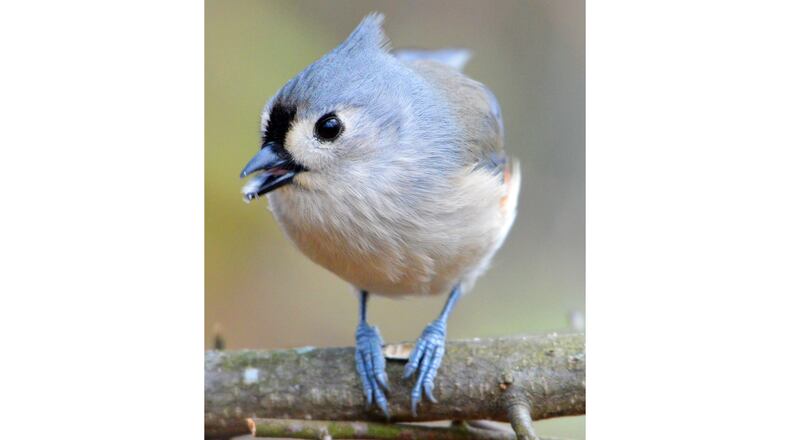On a chilly winter day, I love to look out the window from our comfy living room and watch the chickadees, titmice, nuthatches, blue jays and other birds coming and going at the feeders in the yard. Countless other folks, I know, also enjoy similar “armchair bird-watching” at their homes.
In watching the birds, you might notice some patterns among them as they partake of the seeds, nuts and other goodies at the feeders. For instance, some of the smaller birds will grab a seed or other morsel and then fly off with it to a nearby tree or shrub to eat it.
A main reason is that the birds may have to work on a large seed — such as a black oil sunflower seed — to open it and expose the softer “meat” inside. This is especially true of Carolina chickadees and tufted titmice. The little birds will fly away with a seed in their beaks and then land on a nearby limb, where they will hold the seed with their feet and peck on it until it breaks open.
The trees and shrubs on which they land also offer some cover and protection from predators, such as Cooper’s hawks, which often prey on songbirds at feeders. The trees, however, do not guarantee full safety, so while the birds are hammering on a seed, they also pause constantly to look around for a hawk or other predator that may have suddenly shown up in the vicinity.
Some other common feeder birds, namely brown-headed and white-breasted nuthatches, use a similar technique: They will wedge a large seed or nut into a crevice in tree bark and hammer at the morsel with their chisel-like bills to break it open. Blue jays, which are fond of peanuts in the shell, also will hold an unshelled peanut tightly between their toes to peck at it and tear it open.
IN THE SKY: From David Dundee, Tellus Science Museum astronomer: One of the year’s best meteor showers, the Geminid, will peak at about 50 meteors per hours in the northeast sky on Wednesday and Thursday nights. The Geminid shower happens every December when Earth passes through the bits and pieces of asteroid 3200 Phaethon. The Geminids are one of the few meteor showers associated with an asteroid rather than a comet.
The moon will be new on Tuesday. Mercury is low in the west just after sunset. Venus rises out of the east a few hours before sunrise. Jupiter is high in the east at sunset. Saturn is in the southwest just after dark.
Charles Seabrook can be reached at charles.seabrook@yahoo.com.
About the Author
Keep Reading
The Latest
Featured


